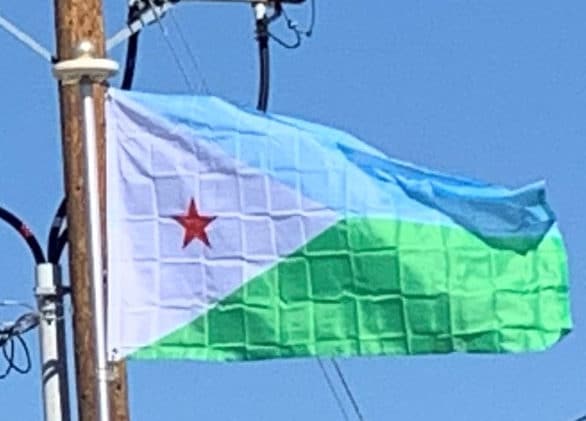From 1862 until 1894, the land to the north of the Gulf of Tadjoura was called “Obock“. Under French administration, from 1883 to 1967 the area was known as French Somaliland (French: Côte française des Somalis), and from 1967 to 1977 as the French Territory of the Afars and the Issas (French: Territoire français des Afars et des Issas).
History:
Prehistory:
Djibouti area has been inhabited since the Neolithic. According to linguists, the first Afroasiatic-speaking populations arrived in the region during this period from the family’s proposed urheimat (“original homeland”) in the Nile Valley, or the Near East. Other scholars propose that the Afroasiatic family developed in situ in the Horn, with its speakers subsequently dispersing from there.
Pottery predating the mid-2nd millennium has been found at Asa Koma, an inland lake area on the Gobaad Plain. The site’s ware is characterized by punctate and incision geometric designs, which bear a similarity to the Sabir culture phase 1 ceramics from Ma’layba in Southern Arabia.
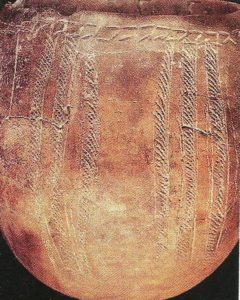
Long-horned humpless cattle bones have likewise been discovered at Asa Koma, suggesting that domesticated cattle were present by around 3,500 years ago. Rock art of what appear to be antelopes and a giraffe are also found at Dorra and Balho. Handoga, dated to the fourth millennium BP, has in turn yielded obsidian microliths and plain ceramics used by early nomadic pastoralists with domesticated cattle.
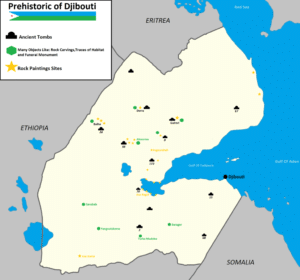
Punt:
Together with northern Somalia, Eritrea and the Red Sea coast of Sudan, Djibouti is considered the most likely location of the territory known to the Ancient Egyptians as Punt (or Ta Netjeru, meaning “God’s Land”).
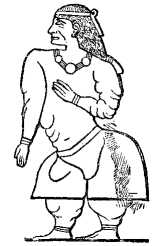
The first mention of the Land of Punt dates to the 25th century BC. The Puntites were a nation of people who had close relations with Ancient Egypt during the reign of the 5th dynasty Pharaoh Sahure and the 18th dynasty Queen Hatshepsut. According to the temple murals at Deir el-Bahari, the Land of Punt was ruled at that time by King Parahu and Queen Ati.
Ifat Sultanate (1285–1415):
Through close contacts with the adjacent Arabian Peninsula for more than 1,000 years, the Somali and Afar ethnic groups in the region became among the first populations on the continent to embrace Islam.
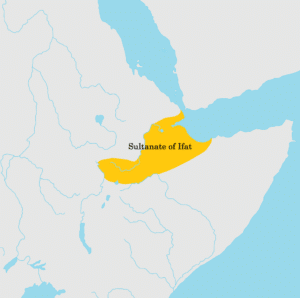
The Ifat Sultanate was a Muslim medieval kingdom in the Horn of Africa. Founded in 1285 by the Walashma dynasty, it was centered in Zeila. Ifat established bases in Djibouti and northern Somalia, and from there expanded southward to the Ahmar Mountains. Its Sultan Umar Walashma (or his son Ali, according to another source) is recorded as having conquered the Sultanate of Shewa in 1285. Taddesse Tamrat explains Sultan Umar’s military expedition as an effort to consolidate the Muslim territories in the Horn, in much the same way as Emperor Yekuno Amlak was attempting to unite the Christian territories in the highlands during the same period. These two states inevitably came into conflict over Shewa and territories further south. A lengthy war ensued, but the Muslim sultanates of the time were not strongly unified. Ifat was finally defeated by Emperor Amda Seyon I of Ethiopia in 1332, and withdrew from Shewa.
Adal Sultanate (1415–1577):
Islam was introduced to the area early on from the Arabian peninsula, shortly after the hijra. Zeila’s two-mihrab Masjid al-Qiblatayn dates to the 7th century, and is the oldest mosque in the city. In the late 9th century, Al-Yaqubi wrote that Muslims were living along the northern Horn seaboard. He also mentioned that the Adal kingdom had its capital in Zeila, a port city in the northwestern Awdal region abutting Djibouti.
